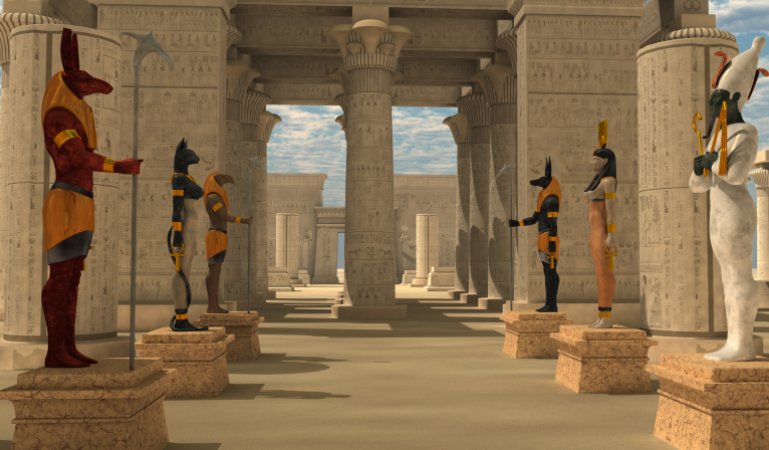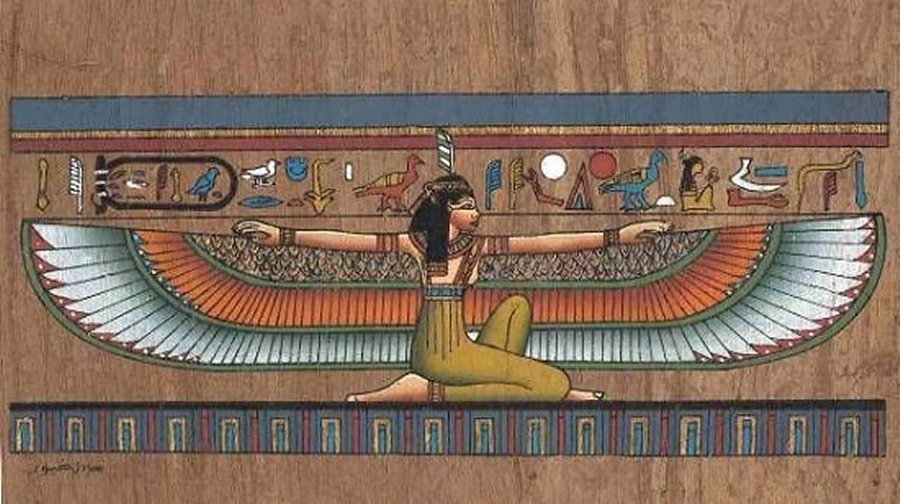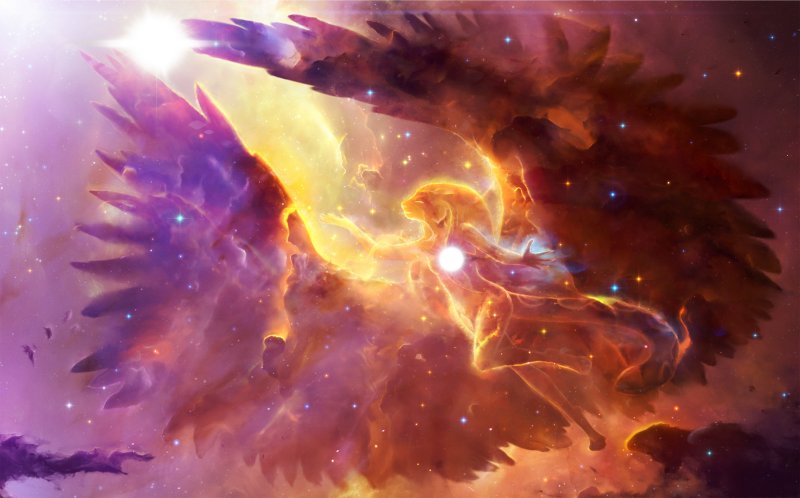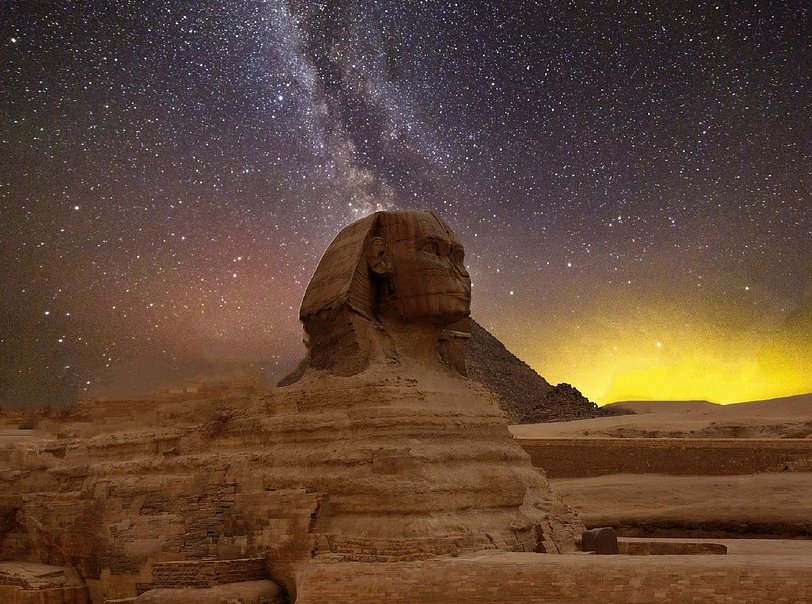Ellen Lloyd – AncientPages.com – In ancient Egyptian mythology, Zep Tepi can be translated as the ‘First Time.’ It was during Zep Tepi Gods established their kingdom on Earth in Egypt and performed their deeds that were later described in myths we read today.

During Zep Tepi Gods were alone on Earth. Credit: Adobe Stock – Catmando
When the Gods emerged for the first time, planet Earth was void of all life. Nothing existed, no humans, no animals, no plants, simply nothing.
Gods Planned The Creation Of Life Long Before The Establishment Of Kingship
Zep Tepi is an ancient Egyptian creation myth that explains how life merged on our planet. According to British Egyptologist Rundle T. Clark (1909– 1970), “the basic principles of life, nature and society were determined by the gods long ago, before the establishment of kingship.” 1
Clark stated, “this epoch—Zep Tepi—”the First Time”—stretched from the first stirring of the High God in the Primeval Waters to the settling of Horus upon the throne and the redemption of Osiris.
All proper myths relate events or manifestations of this epoch. Anything whose existence or authority had to be justified or explained must be referred to the “First Time.”

When the Gods emerged for the First Time the planet was void of life. Credit: Public Domain
This was true for natural phenomena, rituals, royal insignia, the plans of temples, magical or medical formulae, the hieroglyphic system of writing, the calendar—the whole paraphernalia of the civilization . . . all that was good or efficacious was established on the principles laid down in the “First Time”— which was, therefore, a golden age of absolute perfection—”before rage or clamour or strife or uproar had come about.”
No death, disease or disaster occurred in this blissful epoch, known variously as “the time of Re,” “the time of Osiris,” or “the time of Horus.” 1
Ancient Egyptians’ myth of Zep Tepi can be compared to Australian Aborigines’ conception of the Dreamtime.
The Gods Were Alone On Earth During Zep Tepi
During this Golden Age, only the Gods existed, and many world-forming events transpired. Zep Tepi was the time when Maat played a vital role. Maat was the most important religious concept in ancient Egypt and an expression of divine laws and order that everyone had to follow, the Gods, Pharaohs, and humans. Maat was also an Egyptian goddess of right, truth, and justice.

Like many Egyptian deities with a human form, Maat was an abstract goddess of great symbolic importance. For example, Maat was responsible for balance between the gods and people, and between the two Sєxes.
“Lack of Maat and her departure meant an inevitable return to the original chaos (Nu) and the end of the known world.” 2
Maat is similar to similar to the Vedic rta, the Buddhist Dharma, and the Sumerian me’s.
How Egyptian Gods Prepared Our Planet Ready For Life
During Zep Tepi, Egyptian Gods focused their attention on creating Pay Lands that are today difficult to locate. Some of these mythical places whose creation was credited to the original Gods have been found, but not all.
These sacred ancient sites “were sometimes called the Blessed Islands and were called into being by the sacred utterings (mantric speech or magical invocation) of the gods. Some of the Pay Lands included the Mansion of Isden, Island of Re, the Djed Pillar of the Earth, and Be- hdet (Edfu, a holy city still extant as an archeological site along the Nile River). The falcon or hawk, a god form (presumably referring to Horus), was the Pay Lands’ lord.
Other Pay Lands, though harder to locate in actual ancient Egyptian geography, were called the Great Seat, Great Place, and the Throne.” 3

The Gods had to prepare the planet for life. Credit: Adobe Stock – MoVille
According to author and researcher Richard Leviton, an authority on sacred sites and visionary geography, “the time period indicated by Zep Tepi was about 27 million years long. That is about how long it took to get all the conditions correct and ready for life on Earth.
Those conditions included installing and regulating the 100 + different features (and all their copies) of Earth’s visionary geography.
During this period, the Holy Mountains were being prepared by way of their activation by extraterrestrial devices overlaid upon them, called domes. Domes were etheric energy canopies brought to Earth from elsewhere in the galaxy and distributed around the planet in accordance with star patterns as a way of creating and nourishing Earth’s etheric structure.” 3
The Sphinx Controversy – Was Zep Tepi A Real Historical Event?
Most Egyptologists dismiss Zep Tepi as a mythical story “that only existed in the imagination of the ancient priests. But what if it were true?
What if Zep Tepi was an actual historical epoch that can also be dated?” 4 The discovery of a mysterious stela has led some researchers to consider Zep Tepi events may have been real.

What can the Sphinx reveal about Zep Tepi? Credit: Public Domain
Robert M. Schoch Ph.D., and Robert Bauval write in their book Origins of the Sphinx: Celestial Guardian of Pre-Pharaonic Civilization that “during excavations undertaken in 1936 Hᴀssan discovered a large limestone stela immediately north of the Sphinx that belonged to AmenH๏τep II, the father of Tuthmoses IV. Hᴀssan called it the “Great Limestone Stela.” Interestingly, on this stela both Khufu and Khafre are mentioned in a context that suggests that the Great Sphinx was created before their time!
[AmenH๏τep II] yoked the horses in Memphis when he was still young, and stopped at the Sanctuary of Hore-makhet. He spent a time there in going round it (in the chariot) looking at the beauty of the Sanctuary [pyramids] of Khufu and Khafra the Revered. His heart longed to keep alive their name, and he put it into his heart. . . . Then [later when he became king] His Majesty remembered the place where he had rejoiced himself in the neighborhood of the pyramids of Hore- makhet, and it was ordered to erect a Sanctuary there, and to erect in it a stela of limestone on which is in- scribed his great name. According to Hᴀssan, “On his Great Limestone Stela, AmenH๏τep II refers to the ‘Pyramids of Horemakhet,’ a name which perhaps shows that he considered the Sphinx to be older than the Pyramids” 4
“Pharaoh Thutmose IV, who reigned 1400–1390 B.C., had a special relationship with the Great Sphinx at Giza.
According to Thutmose IV, it was the Sphinx that gave him the power to become a pharaoh.
The famous Dream Stele of Pharaoh Thutmose IV can still today be found between the paws of the great Sphinx at Giza.” 5
According to Schoch and Bauval “neither the inscription on the Great Limestone Stela of AmenH๏τep II nor that on the Dream Stela of his son, Tuthmoses IV, can be used as “proof” that the Sphinx was created by a Fourth-Dynasty pharaoh. Indeed, if we are to go by the inscriptions, then we should conclude that the Sphinx was already in existence long before the Fourth Dynasty!
For there is, in fact, a “clear philological ascertainment” on the Dream Stela itself that tells us in no uncertain terms that the Sphinx had been in existence since the remote “first time,” that is, zep tepi—a time that in the mind of the ancient Egyptians harked back to a very distant epoch when the “gods” ruled Egypt.” 4
If Schoch and Bauval are correct, then Zep Tepi was an actual historical event, but the deeds Gods performed could not have occurred 27 million years ago. The Sphinx is probably much older than 4,500 years and may predicate Egypt’s ancient civilization, but it is unlikely it is millions of years old. If the Sphinx was constructed during Zep Tepi, then we are dealing with a time epoch that is not so remote after all.
There is no doubt Zep Tepi deals with some of the most mysterious and exciting events we can encounter in ancient Egyptian mythology. One can learn much more about these events by reading the mysterious Edfu texts that reveal the secrets of Predynastic Egypt and Zep Tepi.
Updated on November 3, 2023
Written by – Ellen Lloyd – AncientPages.com
Copyright © AncientPages.com All rights reserved. This material may not be published, broadcast, rewritten or redistributed in whole or part without the express written permission of AncientPages.com
Expand for references
- Clark, R. T. Rundle – Myth and Symbol in Ancient Egypt (1958)
- Sutherland – Maat – Ancient Egypt’s Most Important Religious Concept, AncientPages.com
- Richard Leviton – Encyclopedia of Earth Myths: An Insider’s A-Z Guide to Mythic People, Places, Objects, and Events Central to the Earth’s Visionary Geography
- Robert M. Schoch Ph.D., Robert Bauval – Origins of the Sphinx: Celestial Guardian of Pre-Pharaonic Civilization





